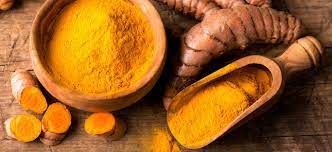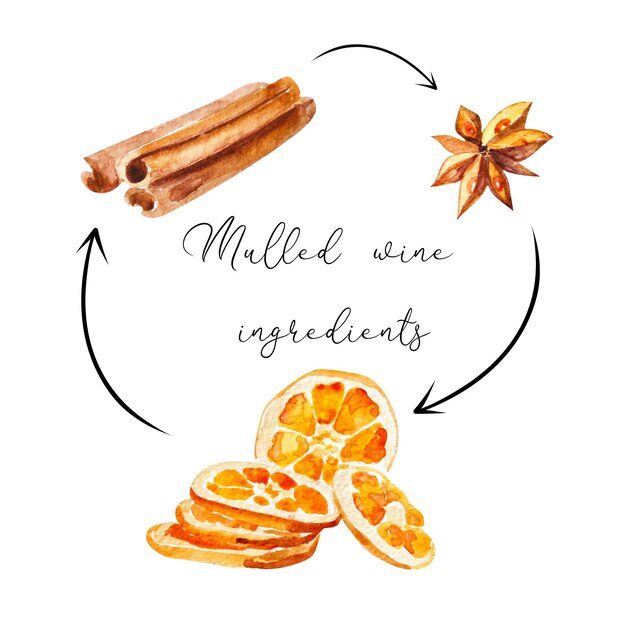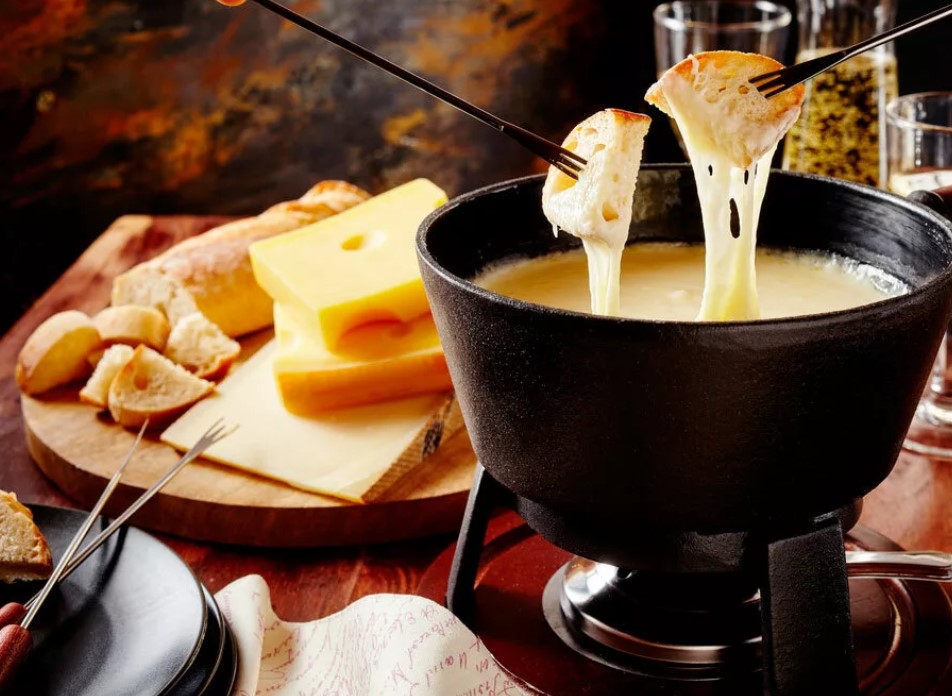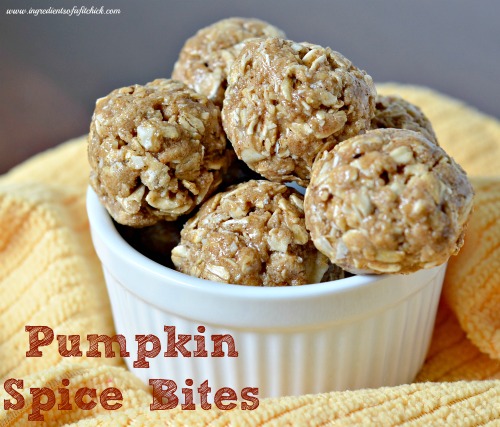What does Turmeric Tastes Like – Unveiling the Unique Flavor of This Vibrant Spice
Turmeric, known as “the golden spice,” is not only famous for its vibrant color and health benefits, but also for its unique flavor. This ancient spice has been used in traditional medicine and cooking for centuries, and its distinct taste adds depth and complexity to a wide range of dishes.
When you first taste turmeric, you’ll notice a warm, earthy flavor with a hint of bitterness. It has a slightly peppery taste, reminiscent of ginger, but with a deeper, more musky undertone. The flavor is rich and complex, making it a popular ingredient in both sweet and savory recipes.
In Indian cuisine, turmeric is a staple spice, used in curries, rice dishes, and lentil soups. Its strong flavor pairs well with other warm spices like cumin, coriander, and cinnamon, creating a harmonious blend of tastes. The depth of turmeric’s flavor is enhanced when it’s heated, releasing its aromatic compounds and giving off a fragrant, almost floral scent.
Besides its taste, turmeric is also valued for its health benefits. It contains a compound called curcumin, known for its powerful antioxidant and anti-inflammatory properties. So not only does turmeric add a burst of flavor to your meals, but it also contributes to your overall well-being.
What Turmeric Tastes Like: Exploring Its Unique Flavor
Turmeric is a vibrant yellow spice that is widely used in cooking and has been praised for its health benefits. But what does turmeric taste like? In order to truly understand its unique flavor, it’s important to explore its taste profile.
When you first taste turmeric, you may notice a slightly bitter yet earthy flavor. The bitterness is mild and not overpowering, making turmeric a versatile spice that can be used in various dishes.
One of the most distinctive aspects of turmeric’s flavor is its warm and peppery undertones. This adds a subtle spiciness to dishes, similar to black pepper or ginger. It provides a depth of flavor that can enhance the overall taste of a dish.
Another characteristic of turmeric is its slight citrusy notes. This adds a refreshing and tangy element to the spice, which pairs well with citrus fruits, herbs, and other spices.
Turmeric also has a distinct aroma that is slightly reminiscent of mustard or ginger. This aroma adds to the overall sensory experience of using turmeric in cooking.
It’s important to note that while turmeric is known for its unique flavor, it is often used in combination with other spices and ingredients. Its taste can vary depending on the other flavors it is paired with, so it is worth experimenting with different combinations to discover your own personal preference.
Overall, turmeric has a complex flavor profile that is both bold and subtle. Its bitter, earthy, warm, and citrusy notes make it a versatile spice that can elevate the taste of a wide variety of dishes.
| Taste Profile of Turmeric | Description |
|---|---|
| Bitter | Mild bitterness that is not overpowering |
| Earthy | A flavor that is reminiscent of the earth |
| Peppery | Warm and slightly spicy undertones |
| Citrusy | Subtle tangy notes |
| Aromatic | Distinct aroma resembling mustard or ginger |
The Flavor Profile of Turmeric
Turmeric is known for its unique and distinct flavor profile. It has a warm, earthy, and slightly bitter taste, with a subtle hint of citrus and ginger. When used in savory dishes, such as curries and stews, it adds a rich and aromatic flavor that is both bold and complex.
One of the key components of turmeric’s flavor is the compound known as curcumin. It gives turmeric its vibrant yellow color and also contributes to its slightly bitter taste. The bitterness of turmeric can vary depending on the variety and how it is processed.
In addition to its warm and earthy flavor, turmeric also has a slightly spicy and peppery taste. This adds depth and complexity to dishes, making them more flavorful and enjoyable. It can be used to enhance the taste of a wide range of dishes, from soups and stir-fries to marinades and dressings.
Turmeric is often described as having a slightly musky flavor as well. This unique characteristic adds an interesting twist to the overall flavor profile of dishes, making them more memorable and enticing. It can help balance out the flavors of other ingredients in a dish, creating a harmonious and well-rounded taste.
To fully appreciate the flavor of turmeric, it’s important to use it in moderation. Too much can overpower other flavors and make dishes taste bitter. The key is to find the right balance, allowing turmeric to enhance and complement the other ingredients in a dish.
| Flavor Profile | Description |
|---|---|
| Warm | The flavor of turmeric is warm and comforting, adding a cozy and soothing element to dishes. |
| Earthy | Turmeric has an earthy flavor, reminiscent of the rich and fertile soil where it is grown. |
| Slightly Bitter | The bitterness of turmeric is subtle but adds depth and complexity to its overall taste. |
| Citrusy | There is a subtle hint of citrus in the flavor of turmeric, adding a refreshing and tangy note. |
| Ginger-like | Turmeric has a mild ginger-like taste, with a slight spiciness and peppery kick. |
| Musky | The musky flavor of turmeric adds an interesting and distinctive element to dishes. |
Overall, the flavor profile of turmeric is complex and multilayered. It adds depth, warmth, and a touch of exoticism to dishes, making them more delicious and memorable.
Earthy and Peppery Notes
Turmeric, also known as Curcuma longa, is a vibrant yellow spice that is widely used in various cuisines around the world. When it comes to its flavor, turmeric has a unique combination of earthy and peppery notes that sets it apart from other spices.
The earthy flavor of turmeric comes from its rich and deep aroma, which is reminiscent of the scent of freshly dug earth. This earthiness adds a grounding and warm quality to dishes, making them more satisfying and comforting.
On the other hand, turmeric also has a distinct peppery taste that provides a subtle kick to dishes. This spiciness is not overpowering but adds a pleasant and lively element to the flavor profile. If you enjoy a bit of heat in your food, turmeric can be a great addition to your recipes.
When used in cooking, turmeric can be used in both sweet and savory dishes to add depth and complexity. It works well with a range of ingredients, such as vegetables, meats, soups, and sauces, and pairs particularly well with spices like cumin, cinnamon, and ginger.
To fully experience the earthy and peppery flavors of turmeric, consider using it in different forms. Fresh turmeric root has a more vibrant flavor compared to dried powdered turmeric, so you may want to experiment with both. You can use fresh turmeric in marinades, dressings, and stir-fries, while powdered turmeric is great for curries, stews, and drinks.
Health Benefits of Turmeric
In addition to its unique flavor, turmeric also offers several health benefits. It contains a compound called curcumin, which has powerful antioxidant and anti-inflammatory properties. Curcumin has been studied for its potential to alleviate symptoms of various conditions, including arthritis, heart disease, and digestive issues.
Conclusion
Turmeric’s earthy and peppery notes make it a versatile spice that can enhance the flavor of a wide range of dishes. Whether you prefer a subtle warmth or a more pronounced kick, turmeric can add a unique and delightful taste to your culinary creations. So go ahead, embrace the vibrant flavor of turmeric and discover the wonders it can bring to your meals.
| Earthy Notes | Peppery Notes |
|---|---|
| Grounding and warm quality | Subtle kick |
| Depth and complexity | Pleasant and lively element |
| Works well with a range of ingredients | Great addition to recipes |
Warm and Slightly Bitter Undertones
Turmeric, with its vibrant orange color, offers more than just a visually appealing addition to your dishes. It also brings a unique flavor profile to the table. When it comes to taste, turmeric is known for its warm and slightly bitter undertones.
The warm undertones of turmeric can be described as earthy and aromatic. It adds a depth of flavor that is both soothing and comforting. Think of a subtle warmth that lingers on your taste buds after each bite. This warmth is what gives dishes that distinctive turmeric flavor.
However, the flavor of turmeric is not all about warmth. It also carries a hint of bitterness, which balances out the overall taste. This bitterness is subtle and not overpowering, but it adds complexity to the flavor profile of turmeric. It’s like a gentle bitter note that adds depth and sophistication to any dish.
The Role of Warmth and Bitterness in Cooking
The warm and slightly bitter undertones of turmeric make it a versatile spice in cooking. Its warmth complements a wide range of ingredients, making it a popular choice in many cuisines. It adds a comforting touch to soups, stews, and curries, creating a rich and flavorful base.
Turmeric’s bitterness also plays an important role in cooking. It can help balance out the sweetness in dishes, enhancing the overall taste. The bitterness of turmeric pairs well with ingredients like ginger and garlic, creating a harmonious blend of flavors. It also adds complexity to marinades, dressings, and spice blends, giving them a unique depth that cannot be replicated.
The Key to Unlocking the Flavor of Turmeric
To fully experience the warm and slightly bitter undertones of turmeric, it is best to cook it properly. Heating turmeric in oil or ghee releases its essential oils and enhances its flavor. This process also helps reduce the bitterness, allowing the warmth to shine through. Simply sauté or roast turmeric with other aromatic ingredients for a delicious and aromatic dish.
In conclusion, turmeric offers a unique flavor profile with warm and slightly bitter undertones. Its warmth brings a comforting touch to dishes, while its bitterness adds complexity and balance. By properly cooking turmeric, you can unlock its full potential and enjoy its distinct flavor in various culinary creations.
Enhancing Other Flavors
Turmeric is not only known for its distinct taste, but also for its ability to enhance the flavors of other ingredients in a dish. Its warm and earthy flavor complements a wide range of flavors and cuisines, making it a versatile spice in the kitchen.
1. Spice Blends and Seasonings
Turmeric is a common ingredient in spice blends and seasonings, such as curry powder and garam masala. It adds depth and complexity to these blends, enhancing the overall flavor profile. When using turmeric in spice blends, it is important to balance it with other spices to avoid overpowering the dish.
2. Savory Dishes
Turmeric can be used in various savory dishes, including soups, stews, curries, and roasted vegetables. It pairs well with ingredients like ginger, garlic, cumin, and coriander, adding a robust flavor to the dish. Whether it’s a simple lentil soup or a complex curry, turmeric can elevate the taste of any savory dish.
3. Rice and Grain Dishes
Turmeric is often used to flavor rice and grain dishes, such as pilaf or biryani. It gives the dish a vibrant yellow color and imparts a subtle earthy flavor. Turmeric can be added directly to the cooking liquid or mixed with spices and aromatics before adding to the dish.
Overall, turmeric is a versatile spice that can enhance the flavors of various ingredients and cuisines. Its unique taste adds depth and complexity to dishes, making it a must-have in any kitchen.
Culinary Uses and Popular Recipes with Turmeric
Turmeric is not only a popular spice in cooking, but it also offers numerous health benefits. From curries to smoothies, there are endless culinary uses for turmeric. Let’s explore some popular recipes that make use of this vibrant and flavorful spice.
Turmeric Curry
One of the most well-known and beloved dishes made with turmeric is curry. Turmeric adds a beautiful golden color, earthy flavor, and slight bitterness to curries. Whether you’re making a vegetable curry or a chicken curry, turmeric is an essential ingredient that brings depth and complexity to the dish. Serve it with steamed rice or naan bread for a delicious and satisfying meal.
Golden Milk
Golden Milk, also known as turmeric latte, is a warm and comforting beverage that has gained popularity in recent years. It combines turmeric, milk (or plant-based milk), sweetener, and spices like cinnamon and ginger. Golden Milk not only tastes delicious but also provides many health benefits associated with turmeric, such as anti-inflammatory and antioxidant properties. Sip on a cup of Golden Milk to relax and unwind.
Turmeric Roasted Vegetables
If you’re looking to add a punch of flavor to your vegetable dishes, turmeric-roasted vegetables are a great way to do so. Toss your favorite vegetables like carrots, cauliflower, and potatoes with some olive oil, turmeric, salt, and pepper, then roast them in the oven until they’re tender and slightly caramelized. The turmeric will add a warm and earthy taste to the vegetables, making them even more delicious.
Turmeric Smoothie
If you’re a fan of smoothies, try adding a teaspoon of turmeric to your next creation. Combine turmeric with fruits like banana, mango, or pineapple, some yogurt or milk, honey or maple syrup, and a handful of greens like spinach or kale. Blend everything together, and you’ll have a vibrant and nutritious smoothie with a hint of warmth from the turmeric.
These are just a few examples of the many culinary uses of turmeric. Whether you’re using it in traditional dishes or experimenting with new and creative recipes, turmeric adds a unique flavor and vibrant color to any culinary creation. So go ahead and explore the world of turmeric in your kitchen!
“FAQ:” What does turmeric taste like
What is ground turmeric, and how does it contribute to the taste of various dishes?
Ground turmeric is a spice that adds a warm, slightly bitter taste to dishes, imparting a distinctive flavor commonly found in Indian cuisine.
What compound is found in turmeric that gives it its vibrant yellow-orange color, and how is it used as a dye?
Turmeric contains curcumin, a compound responsible for its color. This natural dye is often used in Indian fabrics and cuisine to provide a rich yellow hue.
Besides its culinary uses, where else can turmeric be incorporated, and what potential health benefits are associated with it?
Turmeric can be used in various ways, including in skincare routines and as a potential health supplement. Research suggests its benefits in addressing joint stiffness and serving as a potent antioxidant.
How is turmeric traditionally used in Indian food, and what role does it play in creating appetizing dishes?
In Indian food, turmeric is a key spice known for its ability to add flavor and a vibrant yellow color to dishes, making them visually appealing and appetizing.
Can turmeric be used beyond Indian cuisine, and what are some examples of dishes where it can be incorporated?
Turmeric is versatile and can be used in a range of dishes. It adds depth to roasted eggplant, provides a pop of color in chicken noodle soup, and enhances the flavors of morning smoothies.
What is the rhizome of turmeric, and how does it relate to fresh ginger in terms of appearance and use?
The rhizome of turmeric, similar in appearance to fresh ginger, is the underground stem from which turmeric is derived. Both are used in cooking, but they have distinct flavors.
What does research suggest about the potential health benefits of turmeric, and what areas of health may benefit from further exploration?
Research indicates that turmeric, particularly its compound curcumin, may have potential health benefits, including anti-inflammatory properties. Further studies are needed to confirm these findings.
How can turmeric be used in a way that complements its bioavailability, and what role does coconut milk play in this?
Turmeric’s bioavailability can be enhanced by combining it with black pepper or consuming it with healthy fats, such as those found in coconut milk. This pairing aids in better absorption.
Are there any precautions or considerations when using turmeric, such as staining issues, and how can one mitigate the risk of stained hands?
Turmeric has staining properties and can discolor hands. To prevent staining, you can wear gloves when handling turmeric or wash your hands thoroughly after use.
In what traditional medicinal practices, beyond Ayurvedic medicine, is turmeric a common ingredient, and how does it contribute to creating new flavors in these contexts?
Turmeric is a common ingredient in traditional Chinese medicine and Ayurvedic medicine. Its inclusion in these practices not only adds new flavors but also contributes to the medicinal properties believed to support overall well-being.
How can turmeric be incorporated into recipes, and what is a popular method for making turmeric tea?
Turmeric can be added to recipes by grating it for a pungent flavor. Additionally, it is commonly used in turmeric tea recipes.
What is the process of grating turmeric, and how does it contribute to the pungent taste in dishes?
Grating turmeric involves using a fine grater to break it into small pieces. The pungent taste comes from the release of aromatic compounds during the grating process.
Is there a connection between turmeric and saffron, and how do they differ in terms of taste and usage?
Turmeric and saffron are both spices, but they differ in taste and usage. Turmeric has a pungent flavor, while saffron imparts a unique floral and slightly sweet taste to dishes.
What contributes to the taste of turmeric, and what makes this spice’s flavor distinct?
The taste of turmeric is unique and can be described as peppery and slightly bitter. Its distinct flavor sets it apart from other spices.
Are there specific compounds found in turmeric that contribute to its potential health benefits, particularly in terms of skin health?
Turmeric contains curcumin, a compound believed to have potential health benefits, including positive effects on skin health. However, further research is needed to confirm these benefits.
How is turmeric used in Southeast Asian cuisine, and what role does it play in traditional dishes?
In Southeast Asia, turmeric is a common ingredient used to add color and flavor to various traditional dishes. Its knobby appearance makes it easily recognizable in the region’s cuisine.
Can you share some turmeric recipes, and what are the common ways this spice is incorporated into dishes?
Turmeric is versatile and can be used in various recipes. Common ways to incorporate it include adding it to curries, soups, and stews, as well as using it in marinades and spice blends.
What should one know about using turmeric, especially regarding its potential to stain hands and the recommended ways to handle it in the kitchen?
Turmeric has a vibrant yellow color that can stain hands and surfaces. When using turmeric, it’s advisable to handle it carefully, using gloves if needed, and to be mindful of the staining potential.
Turmeric is a staple in Indian curries, where it adds both color and flavor. Its pungent taste enhances the complexity of the curry, creating a rich and aromatic dish.
Can you share a simple method for making turmeric tea at home, highlighting its potential health benefits?
To make turmeric tea, grate fresh turmeric and steep it in hot water. This simple method not only brings out the pungent taste but also offers potential health benefits associated with turmeric consumption.






